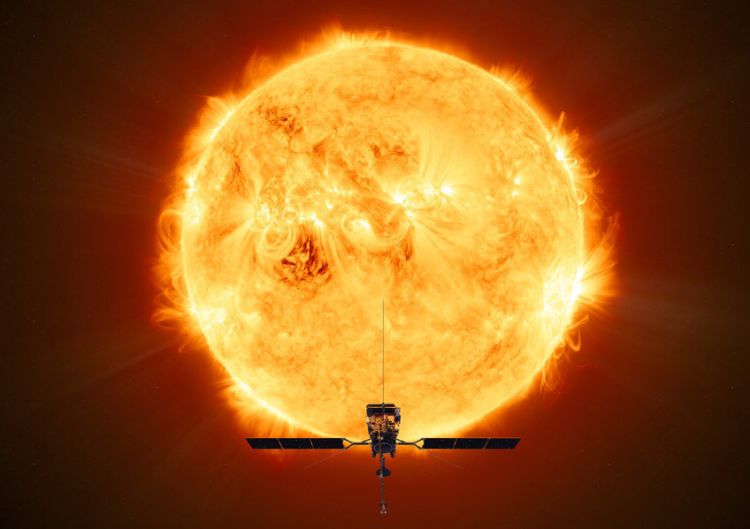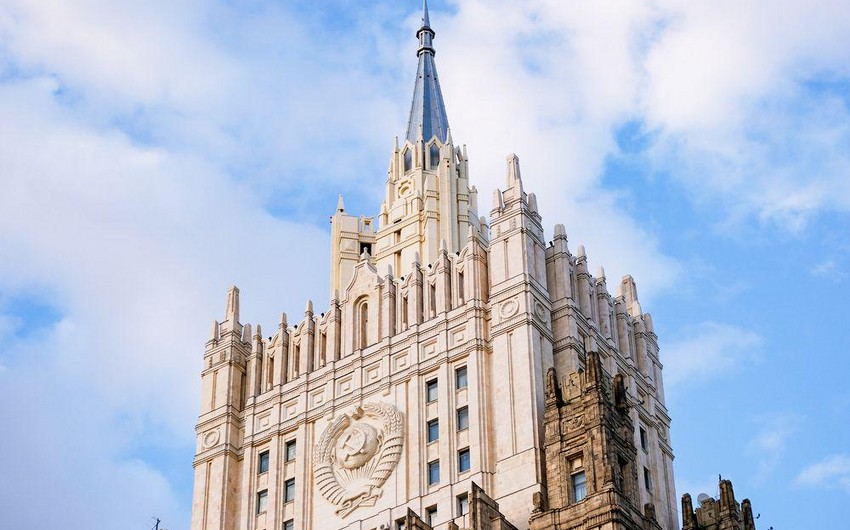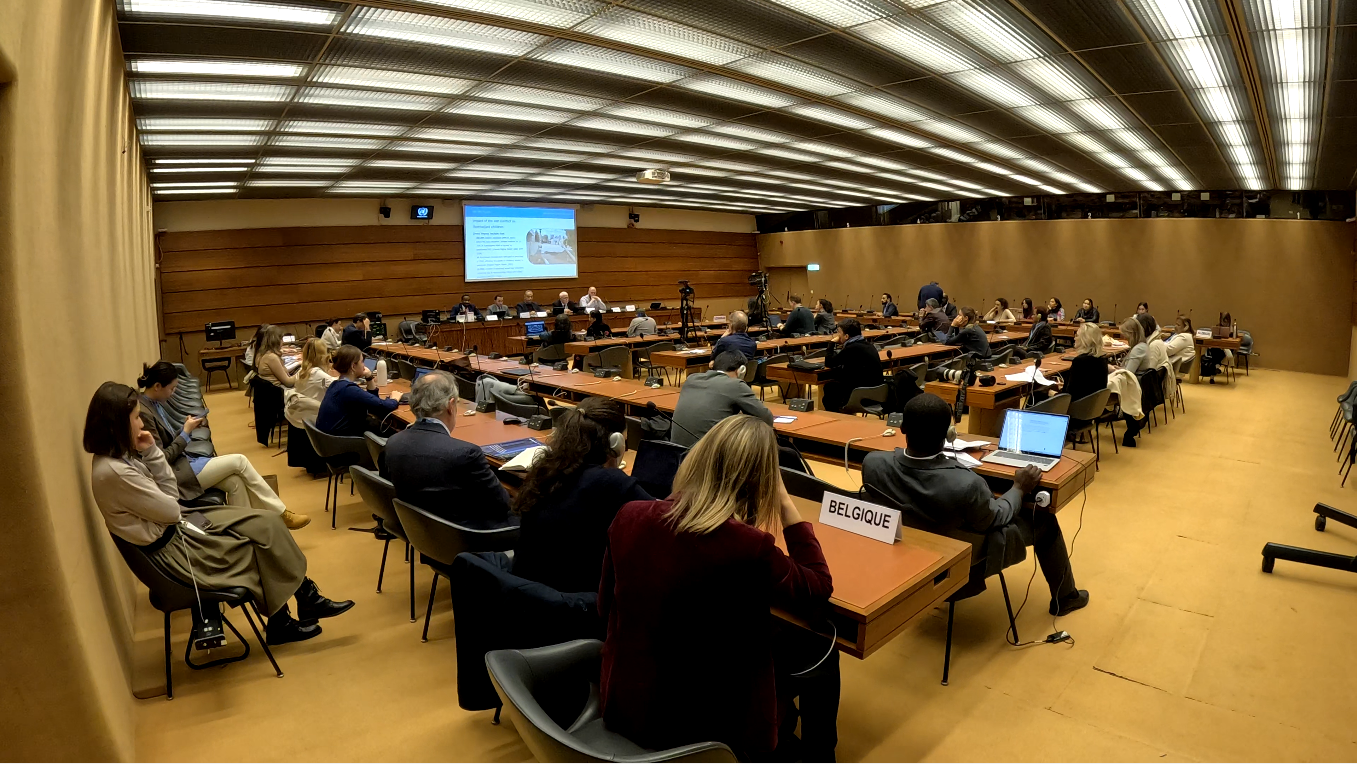On 10 February, the Solar Orbiter solar mission is scheduled to launch into space. Equipped with 10 scientific instruments, the probe of the European Space Agency (ESA) will in the coming years venture to a distance of only 42 million km from the Sun. This is only a little more than one quarter of the distance between the Sun and the Earth. Solar Orbiter will also leave the orbital plane of the Earth and investigate the poles of the Sun for the first time. Through the combination of a novel trajectory and powerful instrumentation, the probe will provide the most comprehensive view of the Sun to date – from the origin of the magnetic fields deep in its interior to the solar wind, the steady solar particle flow from the Sun. The Max Planck Institute for Solar System Research is providing hardware for four instruments to this journey to the Sun.
The Sun is currently showing itself from its unspectacular side: Only a few eruptions eject charged particles and radiation into space. Hardly a spot is visible on the surface of the Sun. This solar monotony is a recurring state. Every 11 years, on average, the Sun experiences such a minimum of activity. Between the minima, however, it turns into a witch’s cauldron. Violent gas eruptions occur, the radiation level increases, and numerous (and sometimes gigantic) spots cover the surface. Why does this striking change take place on average every 11 years? And why are there always significant deviations from this otherwise quite reliable rule of thumb?
The key to understanding the restless nature of the Sun lies in its magnetic fields. They are the cause of violent eruptions, spectacular arc-shaped plasma flows in the solar atmosphere, surprisingly high temperatures in the corona (the outer solar gas layers) as well as all visible structures and patterns on the surface (photosphere). And not least, they are responsible for the approximately 11-year solar cycle.
The Sun is currently showing itself from its unspectacular side: Only a few eruptions eject charged particles and radiation into space. Hardly a spot is visible on the surface of the Sun. This solar monotony is a recurring state. Every 11 years, on average, the Sun experiences such a minimum of activity. Between the minima, however, it turns into a witch’s cauldron. Violent gas eruptions occur, the radiation level increases, and numerous (and sometimes gigantic) spots cover the surface. Why does this striking change take place on average every 11 years? And why are there always significant deviations from this otherwise quite reliable rule of thumb?
The key to understanding the restless nature of the Sun lies in its magnetic fields. They are the cause of violent eruptions, spectacular arc-shaped plasma flows in the solar atmosphere, surprisingly high temperatures in the corona (the outer solar gas layers) as well as all visible structures and patterns on the surface (photosphere). And not least, they are responsible for the approximately 11-year solar cycle.
“This allows us to study the solar wind close to its point of origin whilst closely examining the processes on the Sun and in its atmosphere that produce this wind”, says Max Planck scientist Udo Schühle, Co-Principal Investigator of the EUI (Extreme Ultraviolet Imager) instrument. For this purpose, the space probe is equipped with 10 instruments. Four of them will measure the properties of the solar wind. Six others – including EUI – will look at the Sun itself, its visible surface, and the atmosphere surrounding it.
NASA’s Parker Solar Probe ventures even closer to the solar fire. The probe has been in space since 2018 and already holds the record for the shortest distance to the Sun. In 2026 it will in fact reach almost six million km. “Both missions have different objectives and strengths”, says Hardi Peter, Co-Principal Investigator of the SPICE (Spectral Imaging of the Coronal Environment) instrument at the Göttingen Institute.
“The measured data complement each other. Both teams therefore work closely together to coordinate joint observation campaigns, among other things”, says Peter. Although the Parker Solar Probe examines the solar wind closer to its point of origin (and thus in a more unaltered manner), it cannot image the Sun itself. Solar Orbiter, on the other hand, provides a comprehensive view of all layers of the Sun.
In this way, Solar Orbiter can examine not only the solar wind particles but also their places of origin in the corona. The charged particles – mainly electrons, protons, and helium atomic nuclei – flow far beyond the orbit of Neptune, thereby enveloping the entire solar system in a thin plasma that separates us from the interstellar medium. This entire area is referred to as the heliosphere.
Some of the solar wind particles leave the Sun at speeds of 750 km/s. How is this possible? How does the Sun manage to accelerate the particles to such high speeds? It is clear that magnetic phenomena play a role. Depending on the activity of the solar gas ball, the particle flow can sometimes be stronger or weaker. Particularly fast solar wind particles occur above all during the activity minimum. Their starting point are dark structures in the near-polar corona. Solar Orbiter will investigate these in detail for the first time.
But the unique view of the Sun comes at a price. The technical effort required to operate an observatory in such close proximity to the Sun is immense. On the side of the probe facing the Sun, temperatures of more than 500°C are expected. It is therefore no wonder that Solar Orbiter resembles a flying shield on this side. The solar wind instruments can travel well protected in the shadow of the heat shield. The other measuring instruments, which need an unobstructed view of the Sun, are also mounted behind the heat shield but have peep holes that can be closed.
Three of the instruments for which the Max Planck Institute in Göttingen has contributed hardware look through such openings at the corona. Whilst EUI (Extreme Ultraviolet Imager) will provide images of this outer solar atmosphere every second, SPICE will break down the light from this region into its individual wavelengths. Finally, the Metis coronograph covers the solar disk and can thus look at the transition region between the corona and the innermost heliosphere.
The corona is a key region for solar research. There, an unsolved mystery is hidden. At about 1 million degrees Celsius, the corona is almost unimaginably hot – much hotter than the gas layer below at about 7000°C. Various attempts to explain this “distorted” temperature gradient have led to the identification of shock waves, magnetohydrodynamic waves, elongated plasma fingers, and other magnetic phenomena as possible energy suppliers. However, a comprehensive theory is still missing.
The PHI instrument, which was developed under the lead of the Max Planck Institute for Solar System Research, will look on and under the “skin” of the Sun. The instrument can not only determine the strength and direction of the magnetic fields in the photosphere. It can also indirectly probe deeper layers. This is because the processes inside the Sun lead to oscillations that show up on the surface and which PHI can measure.
“In this way, the Solar Orbiter will have access to the region where the Sun’s magnetic fields presumably originate”, says PHI project manager Joachim Woch. There, at the outer limit of the radiation zone, enormous currents of electrically charged plasma rise (driven by the heat inside the Sun), cool, and sink back into the depths. Together with the rotation of the Sun, this creates the solar magnetic fields in a sort of generator process.
From there, the magnetic structures are washed up to the visible surface, break through them, continue into the atmosphere, and are carried by the solar wind – the never-ending solar particle stream – to the end of the planetary system. In order to exactly understand these processes, more pieces of the puzzle are needed. Solar Orbiter should be able to provide some of these.










